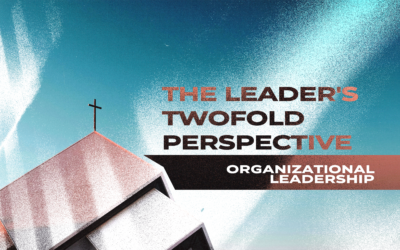One of my coaches was a Manager of Continuous Performance Improvement at one of the world’s largest companies. Another was president of a software company. Yet another managed $1B at the time, and went on to oversee $18B in annual revenue in his career before he came to serve on the board of an organization I lead. A great coach of mine pastored one of the country’s largest churches (and was also my boss), another was also my boss. As I grew as a leader, there are more things I needed to learn. So, at a point a few years ago, I started paying people to help me be a better leader.
My coaches were leaders who knew more than I did in a particular area.
Some other coaches have been authors of books, creators of processes I have used, seminar leaders, podcasters and vloggers.
Every New Level Requires New Learning
For us as leaders to go to each new level of development, additional learning is necessary. In order for your organization (or, in my case, organizations) to grow, each step of growth means you are in a place you have never been. In each new place, you face challenges you have never seen. You must think in ways you have never thought. To grow those organizations means you have to not only master what is necessary at your current level, but you must gain new skills to take you to the next level.
Here’s a sample of the skills needed to lead an organization:
- You must see the future before others do
- Cast the vision so other people can see the preferred future
- Attract others who can assist
- Clearly chart the potential path forward in a way people see the steps and can help with them
- Create a budget (with bookkeepers and accountants) that is clear and strongly aligns with the vision.
- Process cash and in-kind revenue, manage cash flow, build the three financial reports: Profit & Loss, Balance Sheet and Cash Flow. (A non-profit has an Income/Expense Report). Write checks and pay payroll.
- Find, fund, maintain and keep clean a piece of real estate (if applicable) and ensure well-functioning wi-fi, security, phones, opening & closing the building, lawn maintenance, snow removal (in some parts of the country), web site and fixing what breaks
- Determine the handful of what key “chunks” are needed for your particular organization. A church has some. A non-profit has different ones (and they differ from non-profit to non-profit) and a for profit has others.
- Identify and attract the people with the right hard-wiring, skills and experience to run each area
- Build the team, on-boarding and managing people
- Choose, maintain and refine your measures
- Operate a People Development Department (a term I prefer over “Human Resources”) which will write job descriptions, choose health insurance plans, develop and track vacation and other time off, build in incentives, use correctives when necessary
- Raise money or sell products
- Recruit, on-board, manage and communicate with volunteers and potential volunteers
- Communicate what you do through brand management, formal and informal lines of communication
- See what is coming next and adjust the organization to it
- Improve!
Obviously, it will take a lot of work, insight and (in my case) coaching to master these skills.
You Need to See What You Cannot See from Your Viewpoint
The Book of Wisdom, Proverbs tells us in chapter 8, verse 8:
Does not wisdom cry out, And understanding lift up her voice?
She takes her stand on the top of the high hill, Beside the way, where the paths meet.
Notice, wisdom (represented as a woman) looks at the path (from above), not from the path. You get one perspective from the path, you gain another viewpoint above the path. So, here’s the difference:
[table id=2 /]
A great coach sees you, traveling, but sees you from above the fray of the day. Leaders keep their heads down and plow through their days. They tackle a multitude of tasks and appointments and relationships. And, like all people, we can only see what we can see.
A wise coach will give you insights you cannot discover on your own.
That’s what my coach, Terry Walling, does for me. He can see where I am when I can’t. And, that keeps me out of the weeds that would slow me down and impede the progress of the organization. It also doesn’t hurt that he is one of the two most insightful people I have ever known. He is famous for saying, “You cannot get to clarity alone.” He is right.
Doctors Use Coaches
This may seem like a new concept, but not to doctors who desire continual improvement. Just as with you, a coach for a doctor does what great coaches do. Atul Gawande, a surgeon, defines it this way in his TED talk: Want to get great at something? Get a coach
“They are your external eyes and ears, providing a more accurate picture of your reality. They are recognizing the fundamentals, they are breaking your actions down then helping you build them back up again.”
Great Athletes Use Coaches
(This category was probably expected, yet I had not considered the importance of a Pacing Coach until reading these.)
The running world had two great milestones this year:
a. Roger Bannister, the first human being to run one mile in under four minutes passed away this year at age 88.
b. Eliud Kipchoge, a Kenyan runner, set a new record in the marathon, running at the astounding pace of averaging 4.38.4 minutes for every mile of the 26.2 mile race for a new world record of 2.01.39 in the Berlin Marathon!
Both men had coaches. Eliud gave credit to his coach, Patrick Sang, as a key reason he set the record. Not only did he set a new record, but he beat the old record by one minute and 18 seconds (1’18”), the biggest margin of breaking the marathon record in 50 years!
It’s obvious to most of us that great athletes use coaches regularly, whether it is a team sport like baseball, football or basketball. But, coaches are also used regularly in solo sports like running or golf. But, what struck me about these two, is:
Each man had pacers with him when he set the record.
Pacers are strong runners who set the cadence for the one going for the record. If left to his own devices, a runner, even one attempting a world record, has difficulty knowing what pace is needed, especially over a long distance. It was certainly important to Roger Bannister. He selected Chris Brasher and Christopher Chataway as his supporting cast.
“With Brasher setting the early pace, Bannister ran the first quarter mile in 57.5 seconds and the first half mile in 1:58. Then Chataway took the lead, and after three quarters, the time was 3:00.7. Bannister passed him with 300 yards to go.”
So, a Pacer is a kind of coach that runs with you, helping you stay on track and on pace. If you have never seen the race, it’s worth a minute and 37 seconds of your time. Notice the job of Bannister’s Pacers:
Some Coaches are Virtual
Runners World coaches me. (Although, don’t blame them for my slow times.) Each evening at around 9 p.m. I receive an email I read just before bedtime. It has helped with nutrition, running form, corrections and, probably the greatest benefit has been the motivation. I am way down in the amateur level of running. But, I am running farther and more often than I ever have.
So, if the greatest athletes of the world, doctors, and leaders use coaches, it might be a strategy worth considering.
In the space below, let us know how a coach might help you?
Who We Are
LeaderINCREASE helps leaders get clear on where to go and understand how to get there, with less hassle. We understand that choosing to make a difference as a leader isn’t always the easiest.
We focus on providing leaders with resources they need to make a difference and become actionable leaders for their organization. We look forward to helping you achieve your goals as we have done for many others.




